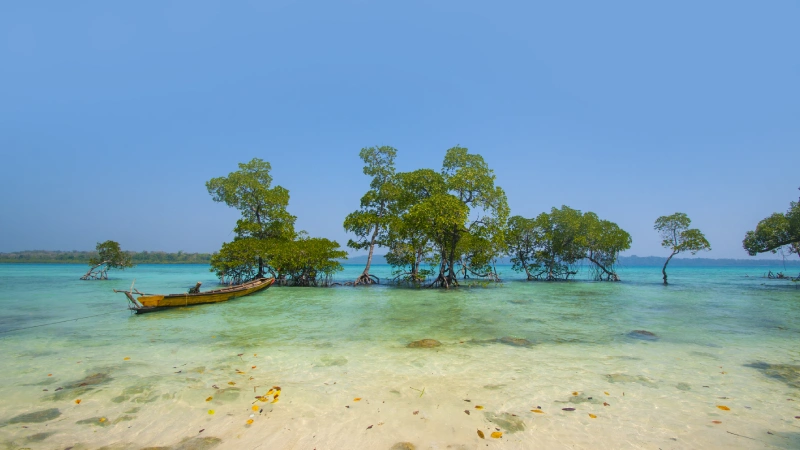The Andaman and Nicobar Islands are a tropical paradise, known for their pristine beaches, lush forests, and rich biodiversity. However, with increasing tourism, it’s crucial to travel responsibly to preserve the islands’ natural beauty and cultural heritage. In this comprehensive guide, I’ll walk you through everything you need to know about responsible travel in Andaman, including tips, best practices, and my personal experiences. Let’s dive in!
What is Responsible Travel?
Responsible travel is about making conscious choices that minimize your impact on the environment and support local communities. It’s a way to explore the world while ensuring that your travel benefits the places you visit and the people who live there.
Why Travel Responsibly in Andaman?
Here are some reasons why responsible travel is important in Andaman:
- Preserve Natural Beauty: The islands are home to some of the most beautiful and untouched natural landscapes in the world.
- Support Local Communities: Responsible travel helps support local economies and preserve cultural heritage.
- Protect Wildlife: The islands are home to a variety of rare and endangered species that need to be protected.
- Minimize Environmental Impact: Responsible travel practices help reduce pollution and waste, ensuring that the islands remain pristine for future generations.
Tips for Responsible Travel in Andaman
Here are some tips to help you travel responsibly in Andaman:
1. Choose Eco-Friendly Accommodations
Stay at resorts and hotels that follow sustainable practices, such as using renewable energy, minimizing waste, and supporting local communities.
My Experience:
During my trip to Andaman, I stayed at an eco-friendly resort that used solar power and had a zero-waste policy. The experience was incredibly rewarding, and I felt good knowing that my stay was supporting sustainable practices.
2. Respect Local Wildlife
Avoid disturbing wildlife and follow guidelines provided by tour operators. Do not feed or touch animals, and keep a safe distance.
My Experience:
I visited the Mahatma Gandhi Marine National Park, where I followed the guidelines to minimize my impact on the marine life. The experience was incredible, and I felt good knowing that I was contributing to the conservation efforts.
3. Minimize Waste
Carry reusable water bottles, avoid single-use plastics, and dispose of waste properly. Many beaches in Andaman have designated waste disposal areas.
My Experience:
I carried a reusable water bottle and avoided single-use plastics during my trip. It was a small but significant step towards reducing my environmental impact.
4. Support Local Communities
Buy local products, eat at local restaurants, and support local businesses. This helps boost the local economy and preserve cultural heritage.
My Experience:
I made it a point to buy souvenirs from local artisans and eat at local restaurants. The experience was enriching, and I felt good knowing that my money was going directly to the local community.
5. Follow Guidelines
Adhere to guidelines provided by national parks, protected areas, and tour operators. This helps minimize your impact on the environment and ensures a safe and enjoyable experience for everyone.
My Experience:
I followed the guidelines at Barren Island, which is a protected area. The experience was incredible, and I felt privileged to witness the island’s natural beauty while minimizing my impact.
Best Practices for Responsible Travel
Here are some best practices to help you travel responsibly in Andaman:
- Plan Ahead: Research eco-friendly accommodations, tour operators, and activities before your trip.
- Travel Light: Pack only what you need to minimize waste and reduce your carbon footprint.
- Use Public Transport: Use public transport or eco-friendly options like bicycles and electric vehicles to get around.
- Respect Local Culture: Learn about local customs and traditions, and respect them during your visit.
- Leave No Trace: Ensure that you leave no trace of your visit by disposing of waste properly and avoiding damage to natural and cultural sites.
My Personal Experience
During my trip to Andaman, I made it a point to travel responsibly and support sustainable practices. From staying at an eco-friendly resort to following guidelines at protected areas, each step was a small but significant contribution towards preserving the islands’ natural beauty. The experience was incredibly rewarding, and I felt good knowing that my visit was making a positive impact.
Frequently Asked Questions (FAQs)
1. What is the best time to visit Andaman for responsible travel?
The best time to visit Andaman for responsible travel is during the dry season (October to May) when the weather is clear and the sea is calm.
2. Are there any eco-friendly tour operators in Andaman?
Yes, there are several eco-friendly tour operators in Andaman that follow sustainable practices. Some popular options include Andaman Eco Tours and Barefoot Scuba.
3. How can I minimize my environmental impact while traveling in Andaman?
You can minimize your environmental impact by choosing eco-friendly accommodations, minimizing waste, using public transport, and following guidelines provided by national parks and protected areas.
4. Can I visit protected areas in Andaman?
Yes, you can visit protected areas in Andaman, but you need to obtain permission from the Forest Department and follow the guidelines to minimize your impact.
Conclusion
Traveling responsibly in Andaman is not just about preserving the islands’ natural beauty; it’s about making a positive impact on the environment and local communities. From choosing eco-friendly accommodations to supporting local businesses, each step you take can make a difference. So, plan your trip, travel responsibly, and get ready to explore the pristine beauty of Andaman!
References:

